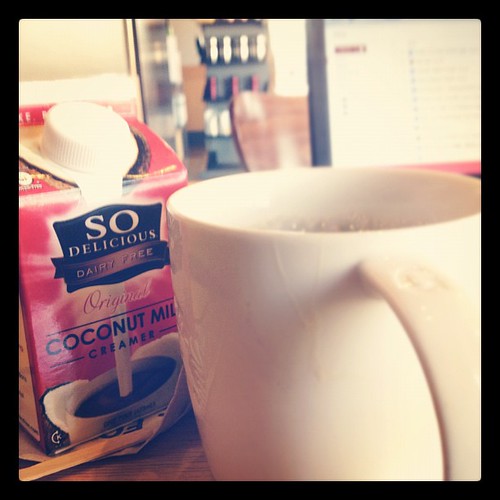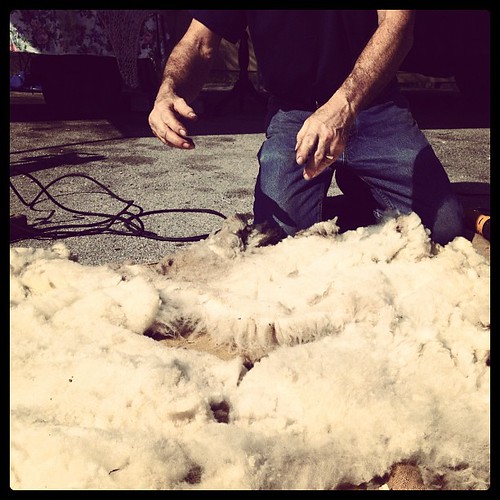This month we're looking at marketing without promotion and the other ways to market: using Place, Product and, today, Price to share your work.
This whole marketing-with-price thing is a tricky subject. You want to think about using price to find new (or repeat) buyers…but you don't want to slip into doubting your price, or worse, trying to compete on price. So before we start thinking about pricing and marketing, let's get one thing straight:
Your customer doesn't buy on price, she buys on value.
Value = How much your product is worth to the Right Person. (This has nothing to do with numbers, and everything to do with how it makes her feel when she buys it).
Think about your last haircut. Did you pay $5 for it or $35 (or more!) for it? Why? Was the action the same? Before you got your haircut, you couldn't be sure of the results, so you didn't really pay for a better haircut, you paid for the promise of a better haircut. And you probably paid for a nicer environment in which to get a haircut. And a friendly hairdresser.

Or your last cup of coffee or tea. Did you drink it at a gas station? Or a coffeeshop? Or did you make yourself a cup of the good stuff at home (with your favorite creamer and sweetener, in your favorite mug). If you drank it at the coffeeshop or at home, it wasn't because of price, it was because of value – you wanted the experience of enjoying that cuppa.
So how do you market with Price, without trying to compete on price?
Start by thinking about your price range.
What's your most expensive item? And your least expensive? Is that a very big range?
If it's a wide range, could you fill it in with mid-range items?
If it's a narrow range, could you add a lower-priced item? A higher-priced item?
Be careful! A lot of my students immediately think of offering a low-priced item to their range. You may want to do that, but before you jump to that conclusion, take a minute to think of a few other options. What could you create that would be worth a higher price?
When considering which to do, keep your Right Person in mind. What else could she buy from you that goes with her current purchase? Or how could you reach a new segment of your Right People with a new price?
Another way of marketing with Price is to group products together (a higher price, but perhaps a savings overall), or to break up a group of products. Or you can change the way people pay for and buy your item.

For example, I no longer sell single skeins of yarn online (you can find it in yarn stores) – instead I offer Monthly Yarn Mail. 1 skein of yarn, every month, delivered right to you. You sign up and are charged monthly, automatically. Or, you can buy a whole year of yarn at once.
While I didn't alter my pricing much, I did alter the way my customer interact with the price. They don't choose to buy a new yarn each month, it's automatic, and that makes the price less of a factor.
Other fiber artists offer “clubs” – where you sign up once and get three or sixmonths of yarn. It's the same principle – grouping something together, since we know our customers usually buy multiples (repeatedly) of what we sell.
Let's look at a few examples:
A jeweler can offer a high end range of jewelry and a more affordable teen-inspired line.
A bag maker can also offer wallets – a great, low-priced add-on to your order
A knitwear designer might create multiple lines – one of affordable basics and another that are very detailed, very intricate knit shawls.
A bookmaker might add a line of handmade bookmarks.

Kylie
March 20, 2012 at 2:43 pm (12 years ago)Tara, I am LOVING this series. It’s giving me so much good stuff to think about, and it’s so practical. Thank you!
Jove
March 20, 2012 at 6:01 pm (12 years ago)I read an article Charlie Gilkey published in Inc. in which he talked about things like anchors. The key thing here is that having a custom high price thing available sets a value comparison for your customer. Even if you don’t sell many of them, it enables your customer to compare your regular offerings with something more expensive. For craftspeople this can be really effective, I think.
Tara Swiger
March 21, 2012 at 11:22 am (12 years ago)Oh, Kylie!
I’m so glad you find it helfpul! I’d love to hear what ideas it’s sparked!
Tara Swiger
March 21, 2012 at 11:23 am (12 years ago)I totally agree, Jo! I used this skein as
a high-priced anchor for a while ($50!)…and then it sold in the first month!